
Sugars digest faster than any other macronutrient in your diet. They quickly break down and head straight into your bloodstream, upping your blood sugar level and giving you almost instantaneous energy. While oranges are high in sugars, they’re also rich in fiber that will slow down some of the sugar absorption during the digestive process. So you probably don’t have to worry about you -- or your child -- getting that sudden sugar crash later in the day.
Sugar Definition
Monosaccharides or disaccharides are the technical names for sugars. They are simple carbohydrates categorized by how many branches they have. Monosaccharides, for example, have just one sugar branch, while disaccharides have two branches. In either form though, sugars eventually wind up as glucose -- the primary source of fuel for all cells in your body.
Amount in Oranges
If you peel apart a small orange -- less than 3 inches in diameter and about 3.4 ounces in weight -- you’ll get about 45 calories and 9 grams of sugar in all. Because carbs, including sugars, have 4 calories per gram, this means you’re getting more than 35 calories from sugar alone. A large orange that is a little over 3 inches in diameter and weighs 6.5 ounces, has about 85 calories total. An orange of this size contains nearly 17.5 grams of total sugar, or roughly 70 calories from sugar. Any remaining calories in oranges come from a small amount of starch, protein and fat.
Sugar’s Reputation
The majority of sugar in oranges is fructose, more commonly known as fruit sugar. This type of naturally occurring sugar isn’t typically a major problem in your diet. These unprocessed foods are also chock-full of vitamins, minerals, antioxidants and fiber. Added sugars from processed foods, or even sprinkling sugar on a bowl of cereal or in a cup of coffee, are bigger concerns. These added sugars don’t add anything to your diet other than calories -- hence the term “empty calories.” Because you don’t really need sugar for nourishment, you should limit added sugars in your diet to just 6 teaspoons per day or less, advises the American Heart Association. This is equal to 25 grams of sugar, or 100 calories from added sugar.
The Glycemic Index
The glycemic index, or GI, is a way of rating foods that gives them a score based on how they impact your blood sugar. Foods high on the scale, like sodas, white potatoes and candies, spike your blood sugar and then bring it back down quickly -- a la sugar crash. But if you have a low-GI food, it’s supposed to only raise your blood sugar a little and then keep it in a steady range for a while. Low glycemic index foods have a grade of 55 or less. Even though oranges are indeed high in sugar, they have a low GI ranking of 40. This is due mainly to the high fiber content -- a small orange has 2.3 grams and a large orange offers 4.4 grams of fiber.
Related Articles
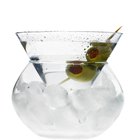
Low Carb Mixed Drinks
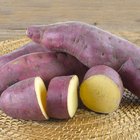
Difference in Sugar Content of Sweet ...

The Sugar in Mangoes

How to Substitute Splenda for Sugar

Low Calorie High Energy Foods

Are Red Plums Good for You?

Brown vs. White Sugar in Body Scrubs

The Paleo Diet and Coffee

Low Carb Peanut Butter Snacks

Fuji Apples Health Benefits
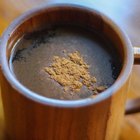
3 Metabolism-Boosting Drinks

Peanuts Vs. Pistachios
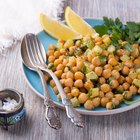
Garbanzo Beans on the Glycemic Index

Nutrition Information on Blueberries

What Is Agave Syrup?

Kiwis vs. Oranges

Foods to Avoid With High Carbs

A Low-Cholesterol Diet Plan Menu
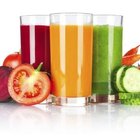
Nutrition Drinks for Diabetics

What Type of Sugar Is in Fruit?
References
- U.S. Department of Agriculture and U.S. Department of Health and Human Services: Dietary Guidelines for Americans 2010
- American Heart Association: Sugars 101
- USDA National Nutrient Database for Standard Reference: Oranges, Raw, All Commercial Varieties
- Centers for Disease Control and Prevention: Carbohydrates
- Harvard Medical School: Glycemic Index and Glycemic Load for 100+ Foods
- National Digestive Diseases Information Clearinghouse: Your Digestive System and How It Works
Writer Bio
Melodie Anne Coffman specializes in overall wellness, with particular interests in women's health and personal defense. She holds a master's degree in food science and human nutrition and is a certified instructor through the NRA. Coffman is pursuing her personal trainer certification in 2015.
Photo Credits
Pixland/Pixland/Getty Images